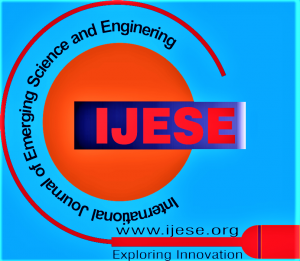![]()
Analyzing Programming Language Trends Across Industries: Adoption Patterns and Future Directions
Swati Patel1, Girish Tere2
1Swati Patel, Department of Information Technology, Ajeenkya D.Y. Patil University, Kharadi, Pune (Maharashtra), India.
2Dr. Girish Tere, Department of Computer Science, Thakur College of Science and Commerce, Mumbai (Maharashtra), India.
Manuscript received on 16 December 2024 | First Revised Manuscript received on 26 December 2024 | Second Revised Manuscript received on 06 January 2025 | Manuscript Accepted on 15 January 2025 | Manuscript published on 30 January 2025 | PP: 19-26 | Volume-13 Issue-2, January 2025 | Retrieval Number: 100.1/ijese.F365214060125 | DOI: 10.35940/ijese.F3652.13020125
Open Access | Editorial and Publishing Policies | Cite | Zenodo | OJS | Indexing and Abstracting
© The Authors. Blue Eyes Intelligence Engineering and Sciences Publication (BEIESP). This is an open access article under the CC-BY-NC-ND license (http://creativecommons.org/licenses/by-nc-nd/4.0/)
Abstract: This study examines the adoption of programming languages across various industries, including finance, healthcare, game development, data science, and embedded systems. It analyzes factors like performance, developer productivity, and ecosystem support influencing language choice]. The research indicates that while Java, C++, and Python remain dominant due to their maturity, versatility, and widespread adoption, newer languages like Rust, Go, and Kotlin are gaining popularity in specific fields that require enhanced safety, scalability, and developer-centric features. The paper also examines the challenges of balancing the adoption of modern languages with legacy systems, including compatibility, resource allocation, and organisational inertia. Additionally, it investigates the role of community support, tooling, and frameworks in driving language adoption [5]. The study predicts future trends driven by advancements in AI, cloud computing, and cybersecurity, highlighting how these technological shifts shape language preferences [3]. Furthermore, it explores the impact of programming paradigms, emerging technologies, and organisational priorities on shaping industry-specific language trends. The research highlights the importance of adopting a strategic approach to language implementation, striking a balance between innovation and the practical challenges presented by legacy systems and workforce adaptability. As industries evolve, they must navigate the trade-offs between adopting innovative languages and maintaining legacy systems, which remain critical for many operations. This research provides valuable insights into how programming languages are evolving to meet the demands of a rapidly changing technological landscape, emphasizing the importance of security, efficiency, and developer productivity in shaping the future of software development.
Keywords: Programming Languages, Industry Adoption, Performance, Software Development.
Scope of the Article: Computer Science and Applications
